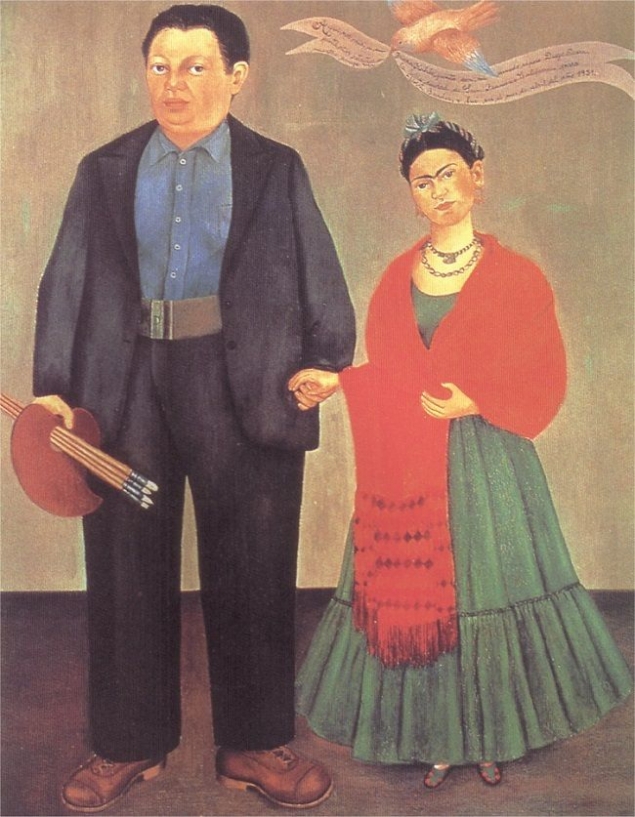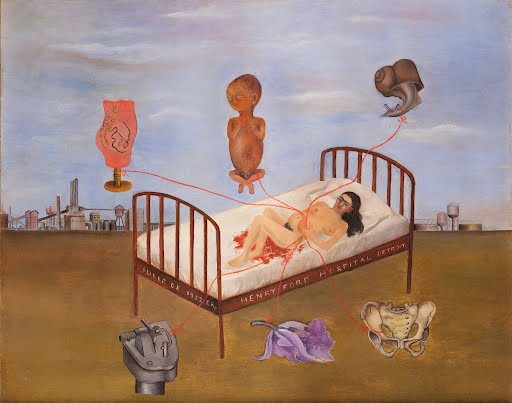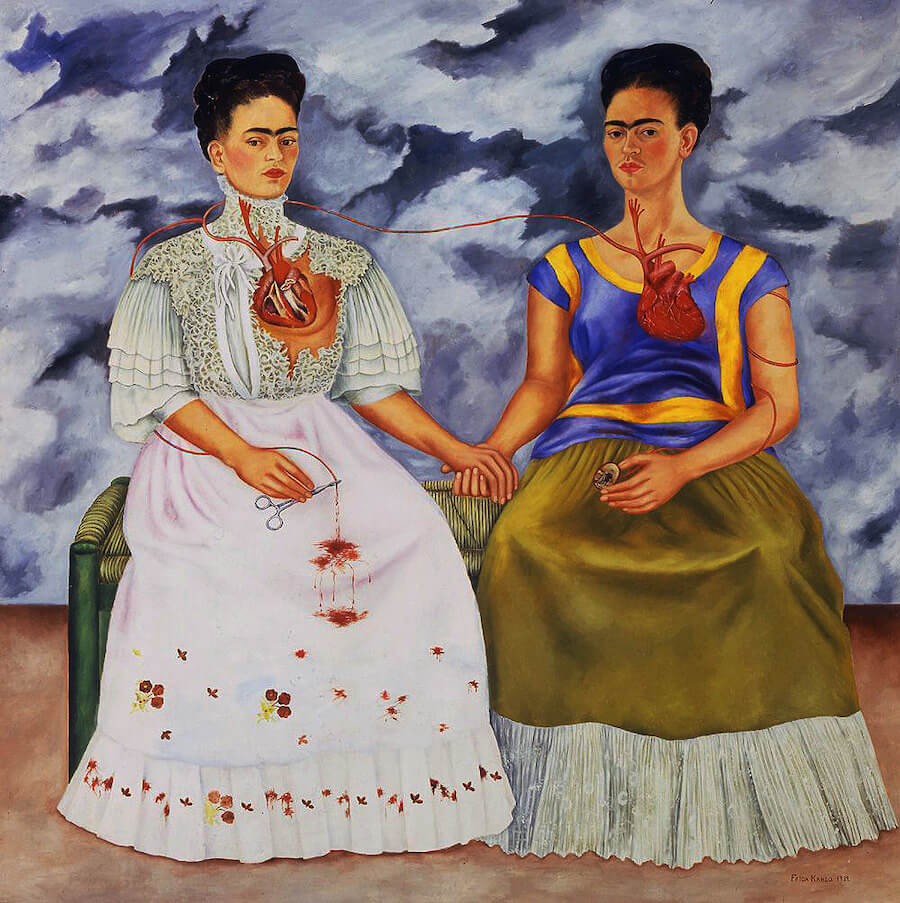Frida Kahlo was a stunning woman who expressed her tragedies in the form of paintings. She was a Mexican native-born on 16th July in 1907. Her father was from Germany, while her mother was a descent of Spanish and India. Moreover, she had three siblings named Adriana, Christine, and Matilde. The father’s works of photography influenced Frida’s inspiration for her career in painting. At the age of six, Frida contracted polio, which took several years to heal. In addition, the effects of polio had a natural impact on her as her right leg became.1 Thus, her father would always motivate her to participate in sports to strengthen the leg’s functionality. In 1922, she was in a position to access enrollment to the national preparatory. During her stay in the institution, she was a cheerful person who apprehended her culturing.
Additionally, she used to hang around intellectual and politically minded allies. Hence this influenced her to be a political activist, allowing her to join the Mexican communist party and the communist league. In September 1927, her life changed as she was involved in a dreadful accident on her way home after school.2 Her chances of surviving were minimal as one of the rails of the bus seat had slipped into her hip and genitals. The incident led to her spinal cord and her bones being smashed and broken. Due to the incident, Kahlo had to bury her dream of being a doctor and indulged in painting in her recovery mood. She managed to finish her first self-portrait in the following year, which she submitted to Gomez Arias.
Kahlo’s Artistic Career
Her first exhibition took place in 1938, where she sold half of her twenty-five paintings. She was summoned for her outstanding artistic talent and received a commission from Clare Boothe Luce, a famous magazine editor. The following year, she relocated to Paris to exhibit her painting and met her favorite artists, such as Pablo Picasso and Marcel Duchamp. In 1941, Kahlo received a commission to paint portraits of influential women in Mexico. However, she could not finish the project, as she lost her father that year.3 Her popularity was advancing in her artistic career despite her life challenges. Her success paved the way in 1953; she received her first solo exhibition. Kahlo can be speculated as an icon of female creativity through her arts.
Frida And Diego Rivera Paint
The art is a 1931 oil painting by the Mexican artist Frida Kahlo. Moreover, it uses the realism form of technique and folkloric mode of style. After two years of her marriage, Frida designed a pigment that is considered a wedding portrait. In her image, nineteenth-century painters such as Jose maria Estrada influenced her artwork, thus adopting the stiff pose method. The painting portrays Kahlo standing next to her husband. She is tilting her head while Rivera is holding four brushes. Rivera and Kahlo hold hands at the center of the portrait while looking towards the viewer, unsmiling.4 The pigeon on the right hand of the paint has a banner that reads, “here is us, me Frida and my dearest hubby Diego Rivera.” Many explanations can be depicted from the paint, as it could be portraying that Frida is the wife of a famous artist. Furthermore, it could predict the tumulous life in their marriage. I think Frida Kahlo has demonstrated her competence and creative abilities to illustrate real-life situations through this painting, and so, her work deserves more credit.
Henry Ford Hospital,1932 By Frida Kahlo
The artist uses oil in her portrait and vibrant color to bring out realism in the paint. This paint presents Kahlo in Henry Ford hospital lying on a tipped-up bed while twisting her body and bleeding. The posture of the image was an illustration of helplessness in the situation. The paint reflected what it felt like for Kahlo when she had a miscarriage in the hospital.5 The paint was Kahlo’s first art to use a metal sheet to support it. It portraits in a primitive style, straightforward as it mixed reality and fantasy. Thus, for me, this artwork validates that, sometimes it takes a simple graphic to pass a message to the intended audience.
The Two Fridas, 1939 by Frida Kahlo
The Two Fridas is one of Kahlo’s oil paintings; she mixes fantasy and symbolism with a realist detail in her painting style. The paint encompasses two Frida’s sitting on a bench holding hands, looking at the gray sky. To the right, Frida wears a traditional tehuana, while on the left, she dresses in a white Victorian dress. The Frida on the left holds a forceps that cuts her veins and spills on her white dress, while the one on the right has a portrait of Diego Rivera. The blood winds into the two hearts of Frida and connects them.6 The interpretation of the image may have been the anguish Frida was experiencing after she separated from Diego.
Moreover, it portrays her life when she separated from Diego and when they were together. The portrait of the two Fridas is a metaphor that explores themes surrounding gender. Blood in most of Frida’s art symbolizes fertility and mortality. I think, the artist has skillfully narrated her life story through this painting, and any artwork lover would appreciate her expertise.



Bibliography
López, Silvia, and Elisa Chavarri. My Little Golden Book About Frida Kahlo.
Hulks, David. “Art History And The Biological View.” Art History, vol 41, no. 1, 2018, pp. 209-211. Wiley, Web.
W alker, Katri. “Las Apariencias Engañan: Los Vestidos De Frida Kahlo (Appearances Can Be Deceiving: The Dresses Of Frida Kahlo): Frida Kahlo Museum, Casa Azul, Coyoacán,Mexico Cityon Permanent Display”. West 86Th: A Journal Of Decorative Arts, Design History, And Material Culture, vol 24, no. 2, 2017, pp. 294-297. University Of Chicago Press, Web.
Heeren, Alice. “Alice Heeren. Review Of “México 1900–1950: Diego Rivera, Frida Kahlo, José Clemente Orozco, And The Avant-Garde” By Agustín Arteaga.”. Caa.Reviews, 2018. College Art Association, Web.
Duarte, Brigida. “Frida Kahlo: Entre Pinturas E Escritos”. Metagraphias, vol 2, no. 2, 2017. Biblioteca Central Da UNB, Web.
Footnotes
- López, Silvia, and Elisa Chavarri. My Little Golden Book About Frida Kahl, page 69.
- Hulks, David. “Art History And The Biological View, page 210.
- W alker, Katri. “Las Apariencias Engañan: Los Vestidos De Frida Kahlo, page 10.
- Heeren, Alice. “Alice Heeren. Review of “México 1900–1950: Page 30.
- Duarte, Brigida. “Frida Kahlo: Entre Pinturas E Escritos”. Page 20.
- Hulks, David. “Art History And The Biological View, page 211.